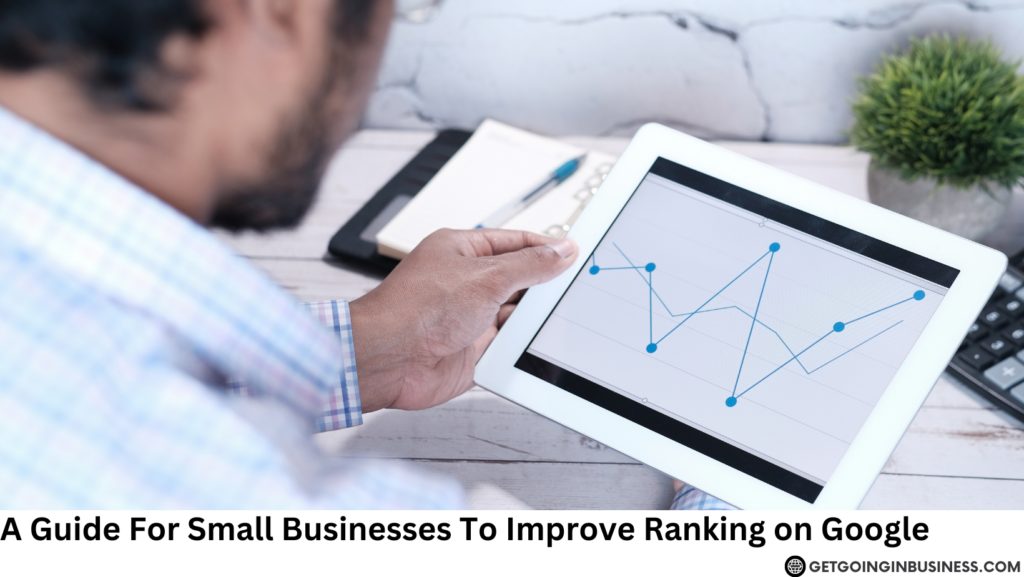10 Ways to Rank on the Top Page of Google for Free

In the world of organic traffic, Google reigns supreme. It traverses the web, deciding which pages are the most useful and pertinent for its searchers on any subject. We have faith in Google’s outcomes and depend on them. Google’s immense power and influence enable even small and local businesses to position high in online search results, and this can be done without any cost! By taking advantage of this capability Google has, it is now more achievable than ever for small businesses to appear on the first page of Google. Achieving the top spot on the first page of a Google search result is something many businesses strive for – and it’s possible to do without spending any money! In this article, we will be discussing approaches to assist your business in ascending to the top of the first page of Google results, employing two free tactics: website optimization and listing optimization. Initially, I will begin by introducing the significance of the first page of Google and then move on to the techniques, involving: It is clear that getting on the first page of Google is beneficial, if not crucial, for any business. Let us go over the advantages this can bring, in order to help you prioritize your company’s strategy. The Significance of the Top Spot on the Search Engine Results Page (SERP) Google’s search results are significantly improving, with knowledge panels, answer boxes, expandable related questions, local results, and more. Since there is a clear decline in traffic and click-through rate as one moves down the search results, it is certainly advantageous to strive for the top ranking. The following image outlines the steps to be taken to obtain the coveted first page of Google ranking: The traffic and engagement levels quickly decrease after the top few results. Having your content featured on the first page of search results leads to a much greater likelihood of people clicking on it It is commonly understood that the top spot on Google’s first page receives the most visits, but did you know there are disparities between the click-through rates of the top vs bottom results? According to one study, the following click-through rates based on Google’s position were observed: The CTR continues to drop and now sits at a low 2.2% for the 10th position. As the number of organic results available per page is now limited due to the inclusion of local results, ads, answer boxes, and other new features, it is essential that one ranks highly on Google search results to gain the maximum amount of clicks. Receive Immediate Attention Google searches have begun to display featured snippets, otherwise known as “Position Zero” answer boxes, as part of their top results. Achieving a high ranking on Google could offer the opportunity to be included in a featured snippet, giving your business rapid visibility and building your reputation. Traffic Dominance A different study determined that the highest-ranked website in Google’s search results gets 33% of search traffic. If you want to have a good search presence and a strong brand reputation, it is best to get your website up near the top of Google’s search engine results. What Advantages Can Your Business Gain From a First-Page Rank on Search Engines? Gaining a high position in Google search results can bring numerous advantages to your business, therefore it’s important to understand these objectives. 1. Enhance Your Recognition If you own a store, which would be the better option: to have it on a busy main road or a tranquil side street? Obviously, the main road is the preferred choice. Google handles an incredible amount of searches each month, making it an invaluable tool for businesses to increase their visibility. Placing your website on the first page of Google is like setting up shop on a busy street, as the more people who become exposed to your brand, the more likely they are to be receptive to conversion activities. 2. Create Additional Leads What if you had to decide between a street in a mixed community and a town that is composed of ideal customers? There is an abundance of first Google results for any search query that you can think of. You should aim to be at the top of the list for the queries that your target customers use. That way, you will be able to have those shoppers who are actively looking to purchase or do business with you. These individuals are more likely to become leads or customers for your business. 3. Enhance Involvement Adweek revealed that the majority of shoppers (81%) perform online research before making a purchase, and Google is the favored search engine for this. The SERP (Search Engine Results Page) provides a wealth of information for shoppers, such as answer boxes, a “People also ask” section, as well as local results with contact info, maps, ratings, and reviews. All of this information is available to consumers without ever needing to click on the link to the business’s website. 4. Generate Web Traffic It is not enough to rely only on snippets and answer boxes to provide the information required. Even if a search engine results page can provide all the information a person needs, there are still some questions for which users will need to click through to the website. It is essential to remember that it usually takes several engagements with a business before a customer converts, and as such, interactions with the website are critical. Having your website on the first page of Google is highly beneficial, as it is responsible for bringing a large portion of web traffic. Studies have shown that the first page of Google captures at least 71% of web traffic, with some sources even claiming up to 92%. On the other hand, the second page of Google only attracts 6% of website clicks, showing a stark contrast between the first and second pages. This stark difference in website clicks is a testament to the importance
A Guide For Small Businesses to Improve Ranking on Google

It has been observed that only 49% of small companies in the U.S. have taken the step of committing to search engine optimization (SEO). This implies that more than half of these businesses have missed out on the opportunity to attract customers and bring in revenue by not making an effort to enhance their rank on Google. Running a small business can be difficult, especially when it is a physical store. Although word-of-mouth is still a common advertising method, it is not the only way to bring in customers. Many times, customers will utilize Google searches to look up the businesses they are interested in before they make a purchase. Businesses should enhance their organic positioning on Google through search engine optimization (SEO). Although SEO may seem intimidating, and there are mixed opinions on its effectiveness, it is a worthwhile endeavor when you consider its ability to help your customers make informed decisions before making a purchase. Strategies to Improve Ranking on Google 1. Refresh your Google Business Account Information. Google Business Profile, accessible for free, can be useful for customers who are looking for businesses online. Not only is this tool part of regular Google searches but it is also incorporated into Google Maps, granting customers the ability to find businesses when they are in the process of traveling to a destination. It’s essential to keep your Google Business Profile up to date to make your business more visible on a search engine results page (SERP). This will help to draw more attention to your website or store. The following are some of the most important changes to make to your profile: Potential customers will use these points to make an informed decision about your company. They can be aware of how far they need to go (if at all), get more information on your business, check out what your products and services are like, and hear about the recent sales and promotions you have. 2. Become Familiar with the Factors that Contribute to Ranking. Google has revealed that its search algorithm takes four elements into account when determining the ranking of content. These elements are: As a business owner, you cannot influence some of the factors involved, however, you can be mindful of them and create content accordingly. 3. Enhance the Content You Have If you want to target new customers without having to create new content, optimizing your existing content is the best way to go. Whether you have a blog, website, or landing page, updating it can help you appeal to those who are searching for the items and services that your business offers. So, how does one go about discovering who they are looking for? And how do you figure out what search terms they’re using? It’s not easy to anticipate what words a customer will type into Google, but it is possible to gain an insight into what they have looked for in the past and make predictions of what they may look for in the upcoming future. If you are looking to focus on certain words in an individual’s inquiry, it is essential to do some keyword research regarding your business, industry, items, and services. You can use either HubSpot’s Content Strategy Tool or paid services like Ahrefs, Moz, or Semrush to get more precise keyword data. There are also free tools such as Google Keyword Planner to predict future search demands. An additional free tool to utilize is Google Trends. 4. Pinpoint Areas of Content That Are Lacking. When it comes to the content gap, there are two aspects to consider. It could be a subject that has not been discussed much (if at all) in your sector, or it could be a stage in your customer’s journey that is absent from the content already in your collection. Identifying both kinds of content deficiencies can be stimulating as you create new material that appeals to your target audience and can bring in income. By employing a few of the same tactics, one can conduct a content audit to recognize keywords that fill in the content gaps. This makes it effortless to spot them quickly and integrate them into your future blog post, product page, or even on the homepage. 5. Include Alternative Text for Images. Having photos on your website, social media, or Google Business Profile can be beneficial for optimizing your organic ranking on Google. This is because of the alt text field which is often overlooked. To comprehend the value of alt-text, we must consider the perspective of a search engine. Since search engines cannot “look” at images as people do, they require another way to process them. Alt-text is a textual explanation of an image that allows the search engine to comprehend the image’s subject and how it connects to the keyword or topic it is linked with on the web page. This is an example of an image pack by IKEA featuring alternative text for pillow covers. Search engines like Google cannot identify and categorize your images without alt text. Therefore, you could be missing out on potential customers who could have discovered your website through an image search or image pack. 6. Respond to Commonly Asked Questions. Investigating your FAQ page can improve ranking on Google. To make it more effective, try searching for the same queries on Google. What are the results? If you run a hairdressing shop and one of the common questions you get asked is about the contrast between balayage and ombre, then you may find a box such as this one in the SERP. A useful way to identify more queries from your customers is to view the “People Also Ask” box. You can then add similar questions to your FAQs page, thereby providing more opportunities to improve ranking on Google. 7. Examine what your Competitors are Doing. The last piece of advice we have for increasing your organic ranking on Google is to examine your competitors. Do not imitate them,
